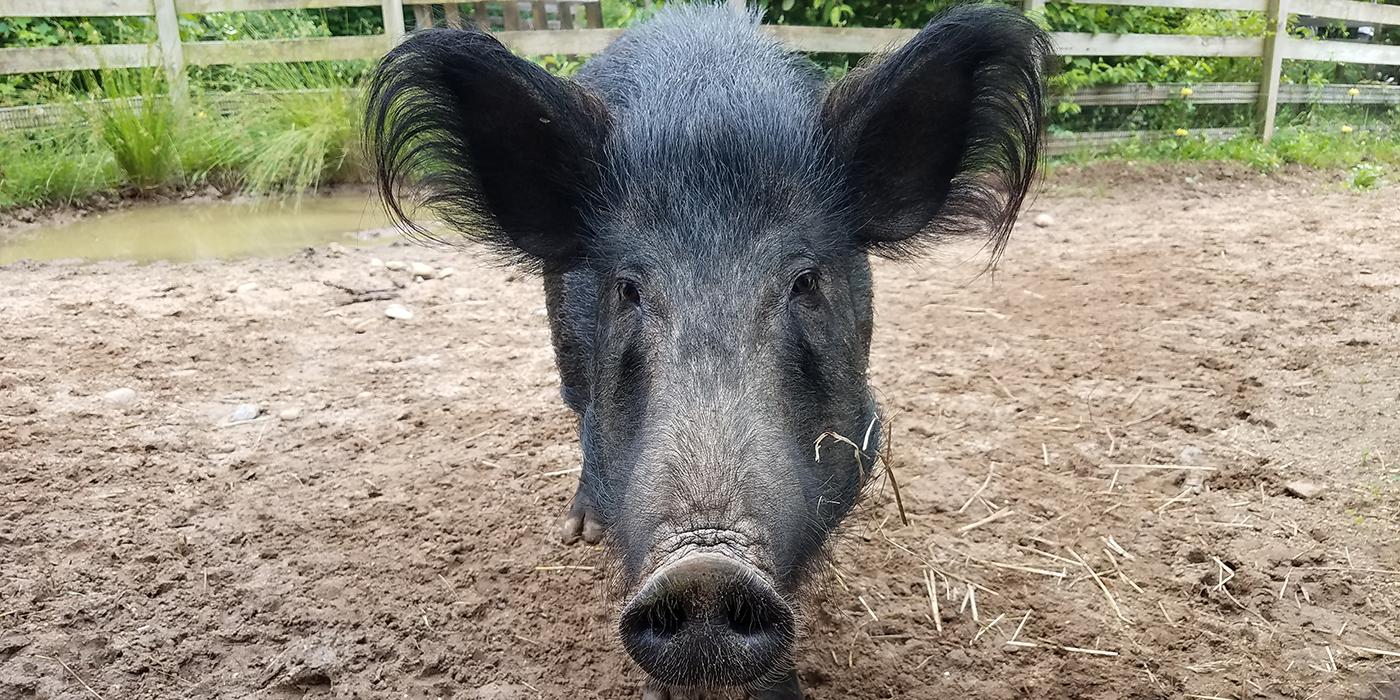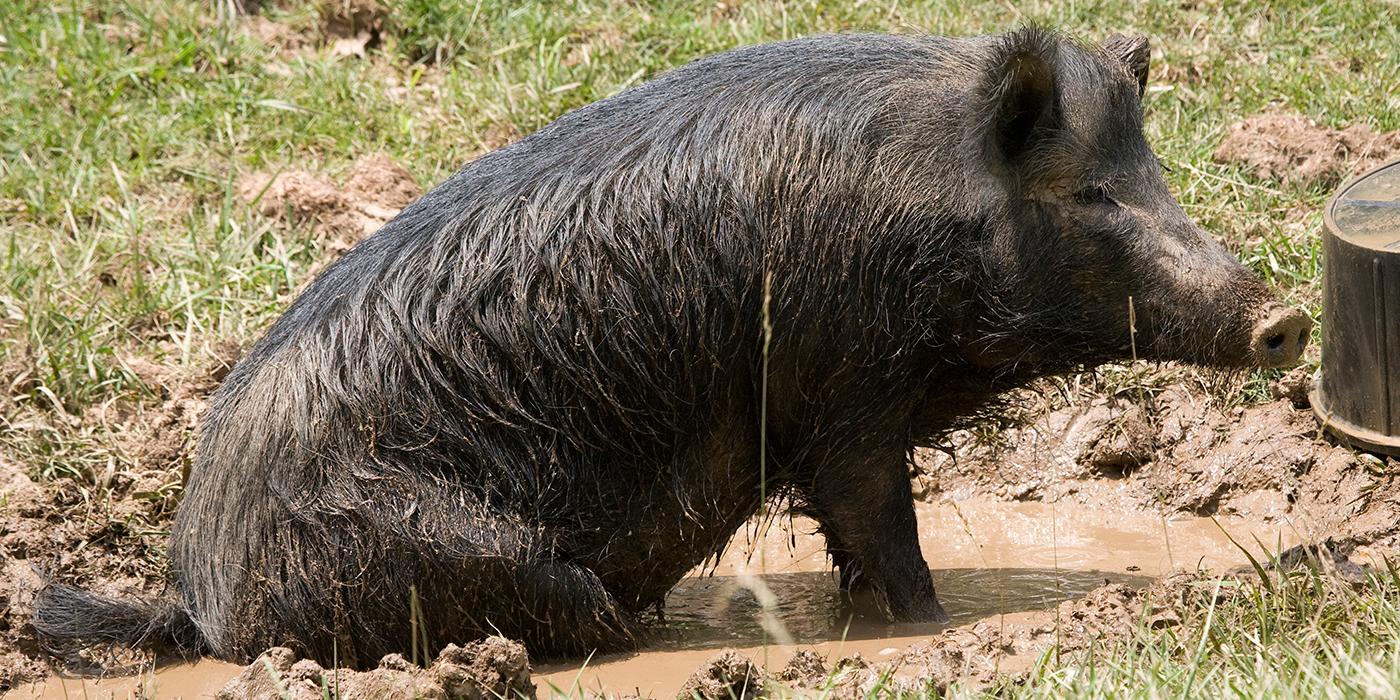Physical Description
Originally, these animals were small, domesticated Spanish range pigs with pricked ears, heavy coats and long snouts. Over time, some of the pigs escaped and became feral in southeastern forests. While most feral pigs eventually mixed with domestic pigs, the Ossabaw Island animals are an exception, having remained a distinct and isolated population. Thus, they reflect their Spanish heritage more closely.
Ossabaw Island hogs occur in several colors including black, black and white, and red and tan.
The unique qualities of the Ossabaw Island hogs do not limit their uses for traditional production. Although in the wild they are smaller than other pigs, Ossabaws grow much larger in human care.
Size
As the pigs adapted to Ossabaw Island, they have become smaller over time, a process called insular dwarfism. Males can weigh over 200 pounds (90.7 kg) and females range from 100 to 150 pounds (45 to 68 kg).
Native Habitat
Lying twenty miles south of Savannah, Georgia, Ossabaw Island is the northernmost member of the historically defined Golden Isles. Island habitat includes rich salt marshes, freshwater ponds, ancient maritime forest, wind-swept dunes and deserted white beaches. Shaped like a wishbone with marsh filling the middle, the island consists of 25,000 acres, of which 11,800 are upland and almost 10 miles are beach, making it roughly twice the size of Bermuda and counting total acreage the second largest barrier island on the Georgia coast.
Lifespan
They have a lifespan of 15 to 20 years in the wild, longer in human care.
Food/Eating Habits
For animals on Ossabaw Island, roots and tubers constitute the main food items taken in winter, whereas leeches, earthworms, insects and fiddler crabs make up a greater portion of the diet in spring and summer. The Smithsonian's National Zoo's hogs are fed herbivore diet with vegetables twice a day.
They had to adapt to the food cycle on the island, which provides little to eat during the spring season. As an adjustment, the Ossabaw Island hogs developed a unique biochemical system of fat metabolism, enabling them to store a larger proportion of fat than any other hog. In conjunction with this, they have a form of low-grade, non-insulin-dependent diabetes, making them excellent medical research animals.
Conservation Efforts
It is currently not possible to import animals directly from Ossabaw Island due to quarantine restrictions. Small breeding groups of Ossabaw Island hogs, descendants of animals brought from the island during the 1970s can be found on the mainland. Offspring of these animals are available from time to time from individual breeders.
The Ossabaw Island hog population is classified as critical by the American Livestock Breeds Conservancy, which estimates there are fewer than 200 in mainland breeding programs, although many more animals can still be found on the island itself. Anyone interested in more information about this breed should contact the American Livestock Breeds Conservancy.
Help this Species
- Consider going meat-free one day each week to help reduce the demand on the livestock industry and decrease your carbon footprint!
- Share the story of this animal with others. Simply raising awareness about this species can contribute to its overall protection.
Animal News

Leaf-tailed Gecko Treated for Skin Cancer With Chemotherapy




